Survival Skills: Using Camping Knives in the Wild
Using camping knives in the wild is essential for survival skills, as they serve multiple purposes and can be a versatile tool in outdoor scenarios. Whether it’s for cutting firewood, preparing food, or building shelter, a camping knife is an invaluable resource that can make a significant difference in a survival situation.
It is crucial to understand how to use these knives safely and effectively, learning proper techniques for cutting, slicing, and carving. Additionally, maintaining and sharpening the blade regularly is essential to ensure its functionality in the long run. By mastering the use of camping knives, individuals can enhance their chances of staying safe and overcoming challenges during wilderness adventures.
So, let’s delve deeper into the world of survival skills with camping knives as our invaluable companion.
Choosing The Right Camping Knife
Discover the essential tips for selecting the perfect camping knife for survival in the wild. Mastering the art of using camping knives will equip you with the necessary skills for your outdoor adventures.
Factors To Consider When Selecting A Camping Knife:
- Blade type: Different camping knives come with various blade types, such as straight edge, serrated, or combination blades. Consider your specific needs and preferences.
- Blade length: Choose a knife with a blade length suitable for your intended use. Longer blades are ideal for chopping and slicing, while shorter ones offer precision for tasks like carving and whittling.
- Handle material: Opt for a camping knife with a durable and grippy handle material, such as wood, rubber, or synthetic materials. This ensures a secure hold, even in wet conditions.
- Weight: Take into account the weight of the camping knife. Lighter knives are easier to carry, but heavier ones may offer more durability and strength.
- Foldable vs. Fixed: Decide between a foldable or fixed-blade knife. Foldable knives are more compact and easier to transport, while fixed-blade knives provide sturdiness and are often more capable for heavy-duty tasks.
- Maintenance: Consider the ease of maintenance for the camping knife. Knives with stainless steel blades require less maintenance, while carbon steel blades offer superior sharpness but require more care.
- Safety features: Look for safety features like a locking mechanism or sheath to protect yourself and others from accidents when the knife is not in use.
Evaluating The Different Types Of Camping Knives Available:
- Utility knives: Versatile knives ideal for general camping tasks, such as cutting ropes, opening packages, or preparing food.
- Survival knives: Designed for extreme survival situations, these knives often feature a robust construction and useful tools like fire starters and whistles.
- Folding knives: Compact and portable, folding knives are practical for a wide range of camping activities and can easily fit in your pocket or backpack.
- Fixed-blade knives: Known for their strength and durability, fixed-blade knives are reliable tools for heavy-duty tasks like chopping firewood or preparing game.
- Multi-tool knives: These knives combine a variety of tools, such as screwdrivers, can openers, and scissors, making them handy for various camping needs.
Understanding The Importance Of Knife Quality And Durability:
- A high-quality camping knife enhances your outdoor experience and ensures efficiency and safety.
- Quality materials, such as stainless steel or carbon steel, contribute to a knife’s durability and resistance to corrosion.
- Well-crafted knives maintain their sharpness for longer, reducing the need for frequent sharpening.
- Durability and reliability are crucial when relying on a camping knife for tasks like shelter building, food preparation, and self-defense.
- Investing in a reliable and durable camping knife means you can depend on it in challenging and unpredictable wilderness situations.
Remember, choosing the right camping knife involves considering factors like blade type, length, handle material, weight, foldable vs. Fixed, maintenance, and safety features. It’s also important to evaluate the different types of camping knives available, such as utility knives, survival knives, folding knives, fixed-blade knives, and multi-tool knives.
Understanding the significance of knife quality and durability ensures you have a reliable tool for your outdoor adventures.
Survival Skills: Using Camping Knives For Shelter Construction
Learn essential survival skills with camping knives for constructing shelters in the wild. These versatile tools are indispensable for creating secure and protective structures in challenging environments. Master the art of using camping knives to ensure your safety and survival in the great outdoors.
Utilizing Knives For Creating Tent Stakes And Supports:
- Tent stakes and supports are essential components of a sturdy shelter in the wild. Here’s how camping knives can come to your aid:
- Craft tent stakes by sharpening sturdy branches with your camping knife. Ensure they are long enough to anchor your tent properly into the ground.
- Whittle the end of each stake to a pointed tip, allowing for easy insertion into various terrains.
- With your knife, trim off any side branches from the stakes to provide a flush and secure fit.
- Utilize your camping knife to fashion additional supports for the tent framework. Cut branches of appropriate length and thickness to act as beams or crossbars.
- Regularly assess the condition of your stakes and supports, replacing or repairing them if necessary.
Carving Notches For Securing Ropes And Tarps:
- Effective securing of ropes and tarps is crucial for a stable shelter. Camping knives can facilitate this process with precision and ease:
- Use your knife to carve small notches into the tent stakes or support beams. These notches create a secure anchor point for fastening ropes.
- Each notch should be deep enough to hold the rope securely but not too deep as to weaken the stake or support.
- Carving notches at different heights will allow for various tension adjustments, enabling you to adapt to different weather conditions.
- Similarly, create notches on tree trunks or branches to anchor tarps or additional shelter materials.
- Ensure the notches are sturdy and well-carved, providing dependable points of attachment.
Cutting Branches And Foliage For Constructing A Shelter:
- Constructing a shelter relies on utilizing natural materials available in the surroundings. Camping knives can aid in cutting the necessary branches and foliage:
- Survey the area and identify suitable trees or branches for your shelter construction.
- With your sharp camping knife, carefully cut branches of varying lengths as per your shelter design.
- Remove any excess side branches and leaves, ensuring a smoother surface while constructing the framework.
- If necessary, use your knife to trim or shape branches to meet specific requirements, such as creating connecting joints or notches.
- To gather foliage for insulation or camouflage, gently cut leaves or small branches using your camping knife. Be mindful not to damage the surrounding ecosystem.
- Always prioritize safety when handling your camping knife during branch cutting activities.
Remember, camping knives can be invaluable tools for shelter construction in the wild, but safety should be your primary concern. Handle your knife responsibly and with caution to maximize its effectiveness while protecting yourself and the natural environment.
Survival Skills: Using Camping Knives For Food Preparation
Discover essential survival skills in the wild by utilizing camping knives for food preparation, ensuring your readiness to handle any situation. Experience the versatility and reliability of these tools for your outdoor adventures.
Camping knives are not just handy tools for survival in the wild, they are also essential for food preparation. Whether you’re a seasoned camper or a beginner, knowing how to utilize your camping knife for cooking can enhance your camping experience.
From gutting and cleaning fish or game, to preparing firewood and kindling for cooking, to slicing and dicing vegetables and meat for campfire meals, these techniques will ensure you have a delicious and satisfying meal even in the great outdoors.
Techniques For Safely Gutting And Cleaning Fish Or Game:
- Hold the fish or game firmly and make a vertical incision along the belly, from the anal vent to the gills.
- Use the knife to carefully remove the internal organs, being cautious not to puncture the intestines or release any unwanted bacteria.
- Rinse the fish or game thoroughly under clean water to remove any excess blood or debris.
- Pat dry with a clean cloth or paper towel to prevent the growth of bacteria.
- It’s important to dispose of the remains properly to avoid attracting unwanted wildlife to your campsite.
Preparing Firewood And Kindling For Cooking:
- Use your camping knife to gather dry wood from the surrounding area, ensuring it’s free from moisture to facilitate easy ignition.
- Start by collecting larger pieces of wood for the main fire, then look for smaller branches and twigs for kindling.
- Use the knife to strip off any wet or damp bark, as this can hinder the fire’s ability to catch.
- Create feather sticks by making small notches along a dry stick, allowing it to burn easily and generate more heat for cooking.
- Properly stacked firewood and well-prepared kindling are essential for a successful and enjoyable campfire cooking experience.
Slicing And Dicing Vegetables And Meat For Campfire Meals:
- With a stable surface, such as a cutting board or flat rock, securely hold the vegetable or meat with one hand and use the camping knife with the other.
- Utilize a swift rocking motion to slice through vegetables, like onions or tomatoes, while keeping your fingers safely curled away.
- For meat, ensure your knife is sharp and use a steady, controlled motion to slice through it for even cooking.
- Carefully dice your ingredients to ensure they cook evenly and are easy to incorporate into your campfire meals.
- Remember to clean your camping knife after each use to maintain its effectiveness and prevent cross-contamination of flavors.
By acquiring the knowledge and skills to efficiently use a camping knife for food preparation, you can elevate your outdoor cooking abilities. These techniques will not only assist in providing nourishment when venturing into the wild, but also add a touch of excitement and satisfaction to your camping experience.
So, embrace the versatility of your camping knife and make the most out of every meal under the open sky.
Survival Skills: Using Camping Knives For Fire Starting
Learn essential wilderness skills with camping knives: focus on fire starting techniques for survival in the wild. Discover how to make the most of your camping knife in emergency situations.
Fire is one of the most important elements for survival in the wild. It provides heat, light, protection, and the ability to cook food. When it comes to starting a fire in the great outdoors, a camping knife can be an invaluable tool.
In this section, we will discuss how to use a camping knife for fire starting and the essential skills you need to master.
Selecting Appropriate Knife Features For Fire Starting:
- The blade length should be around 4 to 6 inches, providing enough leverage for fire starting tasks.
- Look for a knife with a sturdy and durable construction, as it will be exposed to harsh conditions.
- A fixed blade knife is preferred over a folding knife for increased strength and stability.
- A full tang blade, where the blade extends through the handle, offers superior strength and durability.
- Opt for a knife with a sharp and finely pointed tip, which can be useful for precise tasks like making feather sticks.
Striking A Fire Starter Rod With A Camping Knife:
- Hold the fire starter rod in one hand, with the spine of the knife against the rod.
- Place the blade near the edge of the rod, at about a 45-degree angle.
- Apply firm pressure and slide the knife along the rod with a controlled motion.
- The blade should scrape off tiny metal shavings from the rod, creating sparks that can ignite the tinder.
Creating Feather Sticks And Tinder With A Camping Knife:
- Start by splitting a dry stick into several thin, feather-like pieces with the knife.
- Use the back of the knife’s blade to scrape along the stick, creating fine shavings for tinder.
- Ensure the feather sticks and tinder are made from dry wood to increase their flammability.
- Arrange the feather sticks and tinder in a small bundle, ensuring good airflow and contact.
- Ignite the tinder using the sparks from the fire starter rod, and gradually add larger twigs and wood to build a sustainable fire.
Mastering these skills will significantly increase your chances of starting a fire in the wild using a camping knife. However, always remember to follow safety precautions and be mindful of your surroundings to prevent accidents. With practice and the right techniques, your camping knife can become a vital asset that helps you stay warm, cook food, and ward off any nighttime dangers that come your way.
Survival Skills: Using Camping Knives For First Aid
Learn essential survival skills by utilizing camping knives for first aid in the wilderness. These versatile tools offer practical solutions for various medical emergencies, making them a must-have for any outdoor enthusiast. From cutting bandages to removing splinters, camping knives prove invaluable in maintaining your well-being amidst nature’s challenges.
Camping knives are versatile tools that can be invaluable in emergency situations, especially when it comes to first aid. Whether you’re camping, hiking, or simply exploring the wilderness, knowing how to use your camping knife effectively can make a significant difference in addressing injuries and ensuring survival.
In this section, we’ll explore a few essential skills that can be mastered using camping knives for first aid.
Techniques For Making Emergency Splints And Bandages
- Splinting: In a wilderness setting, where medical supplies may be limited, a camping knife can be used to create makeshift splints. Simply find sturdy branches or sticks and use the knife to smooth their surfaces and remove any small branches or thorns. Secure the splint to the injured area with bandages or strips of fabric.
- Bandaging: When it comes to bandaging wounds, a camping knife can be handy for cutting fabric or clothing into strips for tying off wounds or securing bandages. From t-shirts to any extra fabric, using a knife to create clean, even strips is crucial for creating effective bandages. Remember to sterilize the blade before making any cuts.
Opening Packages And Cutting Through Fabric
- Opening packages: In emergency situations, essential supplies might be packaged in hard-to-open containers. A camping knife can come to the rescue in such cases. Its sharp blade allows you to effortlessly cut through packaging materials, enabling quick access to vital items like first aid kits, medications, or emergency food supplies.
- Cutting through fabric: Often overlooked, cutting through fabric may be necessary when clothing needs to be swiftly removed to reach an injury or if bandaging materials need to be fashioned. A camping knife with a sharp blade enables you to make precise cuts through fabric, allowing for expedited and efficient first aid treatment.
Safely Removing Splinters And Foreign Objects
- Splinter removal: When a splinter pierces the skin, it can be painful and potentially lead to infection if not promptly addressed. A camping knife with a clean, sharp edge can be used to gently and carefully remove splinters by scraping or prying them out. Remember to disinfect the blade before and after the removal.
- Foreign object extraction: In the wilderness, accidents can happen, and foreign objects might become lodged in the skin, such as thorns or shards of glass. A camping knife can serve as a useful tool for safely extracting these objects, minimizing the risk of infection or further injury. Disinfect the blade and employ a gentle, controlled technique to remove the foreign object without causing additional harm.
Stay tuned for the next section, where we’ll explore additional survival skills that can be honed by utilizing camping knives in the wilderness.

Credit: www.youtube.com
Survival Skills: Using Camping Knives For Navigation
Learn how to use camping knives for navigation in the wild. Mastering these survival skills will help you find your way without relying on traditional methods.
If you find yourself lost in the wilderness, a camping knife can be an invaluable tool for navigation. Here are some survival skills that will help you use your camping knife effectively for navigation purposes:
Creating Makeshift Compasses With A Camping Knife:
- Find a flat, non-magnetic surface like a leaf or piece of wood.
- Magnetize your camping knife by rubbing it repeatedly against your hair or a piece of fabric.
- Place the magnetized knife on the flat surface, pointing its blade towards the sun.
- Observe the shadow created by the knife’s blade and mark the position where the shadow falls on the flat surface.
- Divide the space between the marked position and the knife’s blade into two equal parts, creating a line bisecting the shadow.
- This line will indicate the east-west axis, with the darker half representing west and the lighter half representing east.
Marking Trails And Keeping Track Of Direction:
- Use your camping knife to create markings on trees or rocks along your trail.
- Make distinct notches or blazes on tree trunks, allowing you to identify your path even in dense vegetation or low visibility conditions.
- The direction of your markings can indicate the general direction you are heading or help you find your way back to a specific location.
- Additionally, you can use your knife to carve arrows on the ground, pointing towards a specific direction to serve as temporary trail markers.
Clearing Vegetation To Improve Visibility:
- Sometimes, dense vegetation can obstruct your visibility and make it difficult to navigate.
- Use your camping knife to clear away low-lying branches and undergrowth that obstruct your view.
- Trim vegetation from paths or paths you create, ensuring a clear line of sight.
- By clearing away vegetation, you will enhance your ability to spot landmarks, orient yourself, and maintain a sense of direction.
Remember, while a camping knife can be a valuable tool for navigation, it is essential to prioritize safety and exercise caution in unfamiliar terrain.
Survival Skills: Using Camping Knives For Self-Defense
Discover invaluable survival skills in the wild using camping knives for self-defense. Learn how to effectively utilize these tools for personal security while navigating the outdoors.
Understanding The Legal Implications Of Using A Knife For Self-Defense
- Carrying a camping knife for self-defense purposes comes with legal responsibilities. Understanding these implications is crucial to ensure you stay within the boundaries of the law. Here’s what you need to know:
- Laws vary by region, so familiarize yourself with local regulations regarding the use of knives for self-defense.
- In most places, using a knife for self-defense is considered a last resort when facing an imminent threat. However, it’s essential to consult legal authorities for specific guidelines.
- The level of force you can use with a knife will depend on the circumstances. It’s generally advised to only use the minimum force necessary to protect yourself.
- It’s crucial to justify your use of a knife for self-defense by demonstrating an immediate danger or threat of bodily harm. Be prepared to prove that you acted reasonably and proportionately in the situation.
Techniques For Using A Camping Knife To Deter Wildlife Threats
- Camping in the wild means encountering various wildlife species, some of which may pose a threat. Knowing how to use your camping knife effectively can help deter potential dangers. Here are some techniques:
- Make noise: Create loud sounds by clanging your knife against solid objects or using it as a noisemaker. This can startle wildlife and keep them away from your campsite.
- Display confidence: Hold your camping knife in a visible manner while maintaining a calm and assertive presence. This can deter animals from approaching you.
- Use it as a tool: Your camping knife can be utilized to prepare your campsite or perform tasks such as cutting branches or gathering firewood. These actions help create a safer environment and discourage wildlife from getting too close.
- Understand animal behavior: Research and learn about the wildlife species in the area you’ll be camping in. This knowledge can help you make informed decisions on when and how to use your knife as a deterrent.
- Always prioritize safety: Remember, prevention is key in wildlife encounters. Properly storing food, disposing of waste, and following all safety protocols significantly reduce the risk of attracting animals to your campsite.
Creating Tools For Protection And Signaling For Help
- In addition to self-defense, your camping knife can serve as a versatile tool for creating protective measures and signaling for help in emergency situations. Consider these uses:
- Building a shelter: Your knife can help cut branches, carve notches, and shape materials when constructing a shelter for protection against harsh weather conditions or potential threats.
- Crafting weapons: In extreme survival situations, your camping knife can be used to craft spears, arrows, or traps for hunting food or defending yourself against larger predators.
- Signaling for help: Your knife offers the potential to create reflective surfaces by polishing or sharpening it. These shiny surfaces can be used to reflect sunlight and catch the attention of potential rescuers.
- Carving distress signals: Use your knife to carve universal distress signals on visible surfaces such as trees or the ground. These markings can help search parties locate you more quickly.
- Improvising tools: Your camping knife can be used to fashion tools for various tasks, such as creating a makeshift fishing hook or gutting a caught fish for food.
Remember, proper knowledge, preparation, and respect for your surroundings are essential when utilizing your camping knife for self-defense and protection purposes in the wild.
Survival Skills: Using Camping Knives For Emergency Situations
Discover the essential survival skills of using camping knives in the wild. Learn how these versatile tools can be crucial in emergency situations.
Camping knives are versatile tools that can be essential in emergency situations while out in the wild. Whether you find yourself trapped in a vehicle, facing a crisis situation, or needing to open cans without a can opener, a camping knife can be your lifeline.
We will explore three survival skills that you can master using your camping knife: cutting seat belts and escaping from a vehicle, breaking glass in a crisis situation, and opening cans and containers without a can opener.
Cutting Seat Belts And Escape From A Vehicle:
- A camping knife with a sharp and sturdy blade can be a savior when trapped inside a vehicle. Here’s how it can help:
- Cutting through seat belts: The sharp blade of a camping knife can effortlessly slice through seat belts in the event of an emergency, allowing a rapid escape from a vehicle.
- Multi-purpose tool: Apart from cutting seat belts, a camping knife can also be used to break glass windows, providing an alternate exit route.
Breaking Glass In A Crisis Situation:
- Breaking glass can be challenging without the right tools, but a camping knife can come to the rescue:
- Glass-breaking tip: Some camping knives are equipped with a glass-breaking tip on the handle. By firmly striking the glass with this specialized end, you can shatter it and create an escape route.
- Tactical application: The glass-breaking capability of a camping knife is crucial in emergency situations, such as being trapped in a burning or submerged vehicle.
Opening Cans And Containers Without A Can Opener:
- A camping knife can be your go-to tool when you need to open cans or containers and don’t have a can opener available:
- Puncture and rotate: Use the sharp tip of the camping knife to puncture the lid of a can. Once a small hole is made, insert the blade and carefully rotate it around the lid, gradually widening the hole until you can access the contents.
- Leveraging the blade: By using the blade as a lever, you can pry open can lids or lids on other containers that are sealed shut. Apply slight pressure and work your way around the lid until it loosens and can be easily removed.
Remember, when utilizing a camping knife for emergency situations, always prioritize safety and exercise caution. Practicing these survival skills beforehand will help you feel more confident and prepared when the need arises. So, don’t forget to pack your camping knife on your next wilderness adventure – it just might be the tool that saves the day.
Conclusion: Mastering The Art Of Knife Use In The Wild
Master the art of using camping knives in the wild with these survival skills. Enhance your knife proficiency and ensure a successful outdoor experience.
Recap Of The Essential Survival Skills Covered In The Article:
- Identifying the right camping knife for your needs: Understanding the different types of camping knives and their functionalities.
- Proper grip and handling techniques: Mastering the three main grips – hammer, fencer, and ice pick – to ensure control and precision.
- Knife safety and maintenance: Learning how to safely handle and store your camping knife, as well as keeping it sharp and rust-free.
- Knife skills and techniques: Developing proficiency in basic cutting techniques like slicing, chopping, and dicing, as well as more advanced skills like whittling and creating tinder.
- Wilderness cooking with a camping knife: Employing your knife for food preparation, including cleaning fish, gutting small game, and even filleting.
- Building shelter and fire: Utilizing your camping knife to craft essential tools like stakes, trap triggers, and kindling.
- Emergency situations and first aid: Understanding how to use your camping knife for various survival scenarios, such as creating a makeshift splint or performing basic first aid.
Importance Of Practicing Knife Skills In A Controlled Environment:
- Safety first: Practicing knife skills in a controlled environment allows you to minimize risks and avoid accidents by becoming familiar with proper techniques.
- Building confidence: Consistent practice enhances your proficiency and comfort in handling a camping knife, ensuring that you can rely on your skills when facing challenging situations.
- Muscle memory development: Repetitive training in a controlled setting helps train your muscles and motor skills, allowing you to perform knife tasks more efficiently and effectively in the wild.
- Avoiding unnecessary damage: By practicing in a controlled environment, you can avoid damaging your camping knife or injuring yourself, preventing potential setbacks during real survival scenarios.
Encouragement To Keep Improving And Exploring New Ways To Use Camping Knives In The Wild:
- Continuous learning: There is always room for improvement when it comes to knife skills. By seeking new information, training, and techniques, you can expand your knowledge and abilities.
- Pushing boundaries: Don’t be afraid to step out of your comfort zone and explore innovative ways to use your camping knife. Experiment with tasks like carving utensils, creating fishing hooks, or crafting intricate campsite amenities.
- Engaging with the community: Connect with other outdoor enthusiasts and survival experts to exchange ideas, share experiences, and learn from each other’s knowledge.
- Embracing challenges: Every adventure brings unique situations that require creative problem-solving. Embrace the opportunity to put your knife skills to the test in real-life wilderness scenarios, further honing your abilities.
Remember, mastering the art of using camping knives in the wild is an ongoing journey that combines knowledge, practice, and innovation. So keep exploring, improving, and expanding your arsenal of survival skills. Happy camping!
Frequently Asked Questions Of Survival Skills: Using Camping Knives In The Wild
Can You Survive In The Wilderness With Just A Knife?
Surviving in the wilderness with just a knife is possible, but it requires knowledge and skills.
What Can Knives Be Used For In Survival?
Knives in survival can be used for cutting, hunting, self-defense, building shelters, preparing food, and creating tools.
Why Do You Need A Knife In The Wilderness?
A knife is essential in the wilderness for tasks like cutting food, building shelter, and self-defense.
What Do You Use A Bushcraft Knife For?
A bushcraft knife is used for various outdoor activities including survival skills, camping, and wilderness exploration.
Conclusion
To wrap up, mastering the use of camping knives is essential for wilderness survival. These versatile tools serve numerous purposes, including food preparation, shelter building, and self-defense. With proper training and understanding, one can harness the full potential of a camping knife.
Remember to prioritize safety, always using the knife with caution and keeping it sharp and in good condition. When choosing a camping knife, consider its blade material, length, and design, ensuring it meets your specific needs. Additionally, learning basic knife skills and techniques will make your outdoor experience more enjoyable and efficient.
Whether you’re an avid camper, hiker, or adventurer, a camping knife is a valuable companion that can significantly enhance your survival skills and overall experience in the wild. So embrace the journey, embrace the wilderness, and let your trusted camping knife be your guide.

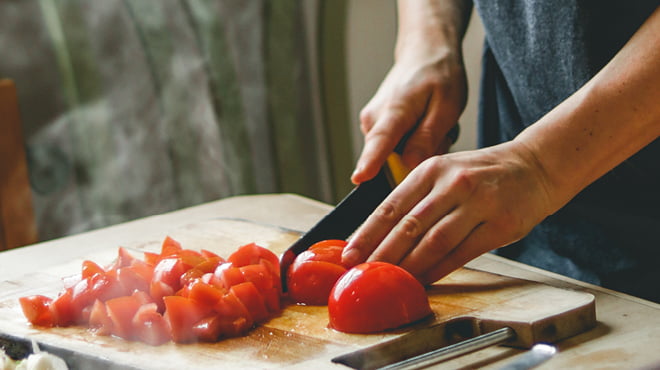
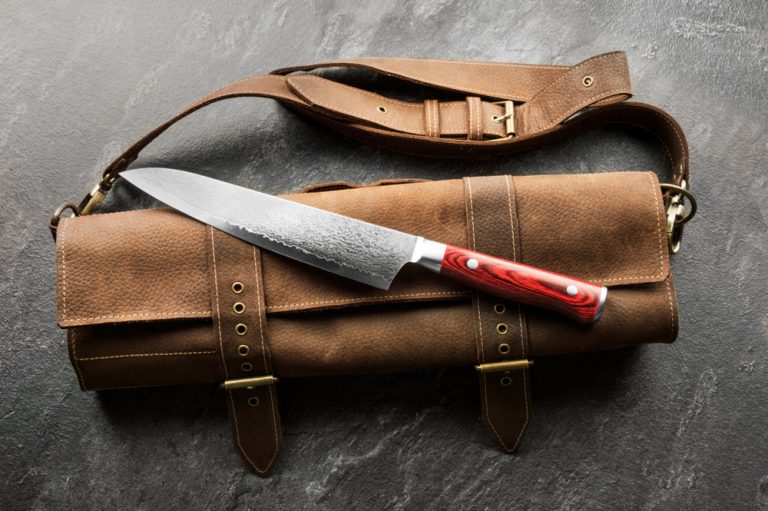
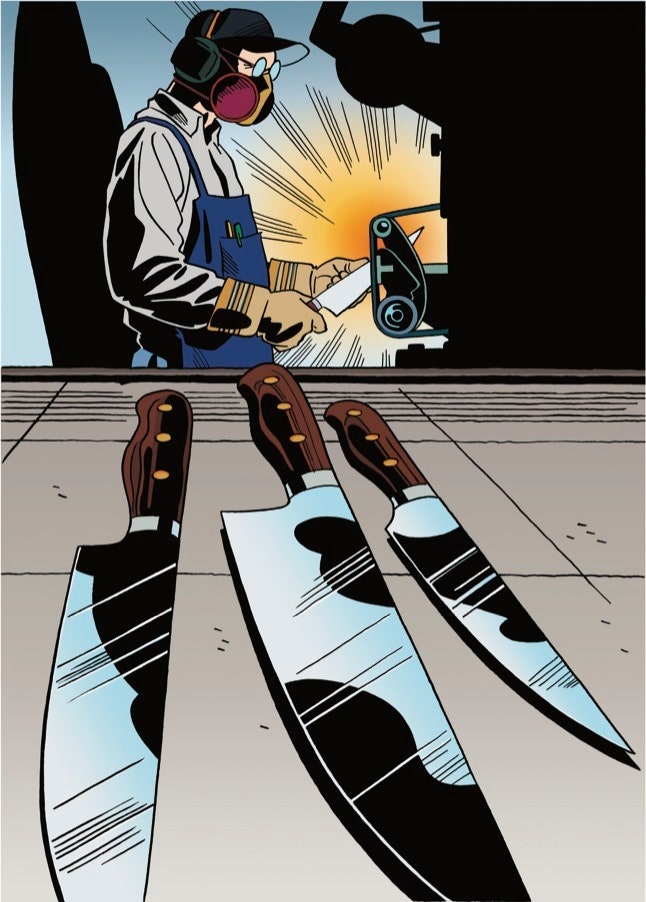
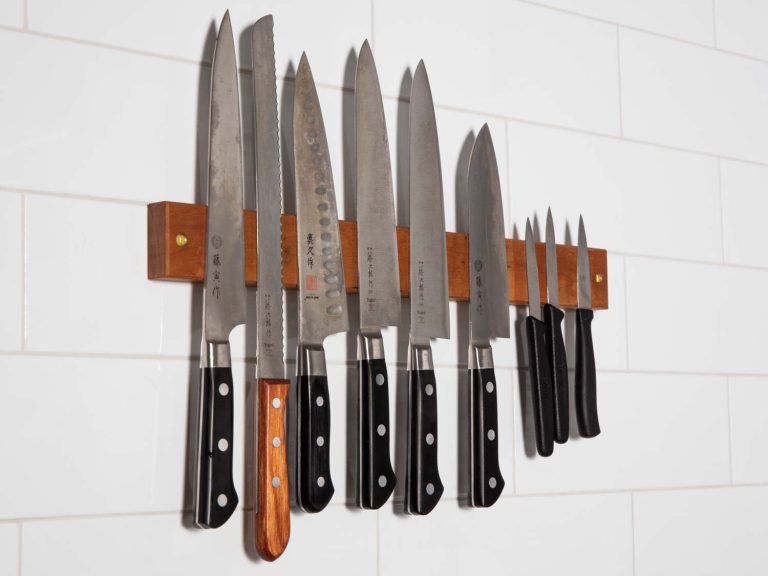
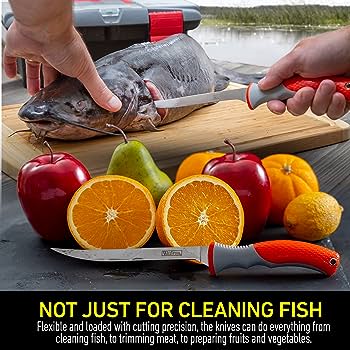
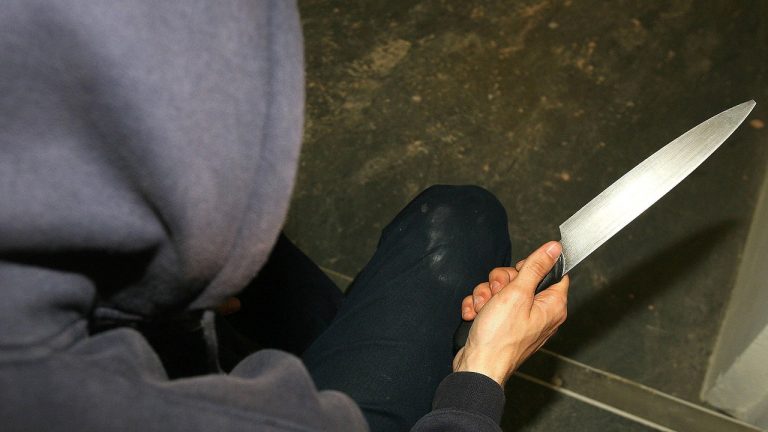
GSA Search Engine Ranker will automatically ping all the backlinks it
makes but you can integrate them into the supported indexing services if you want.